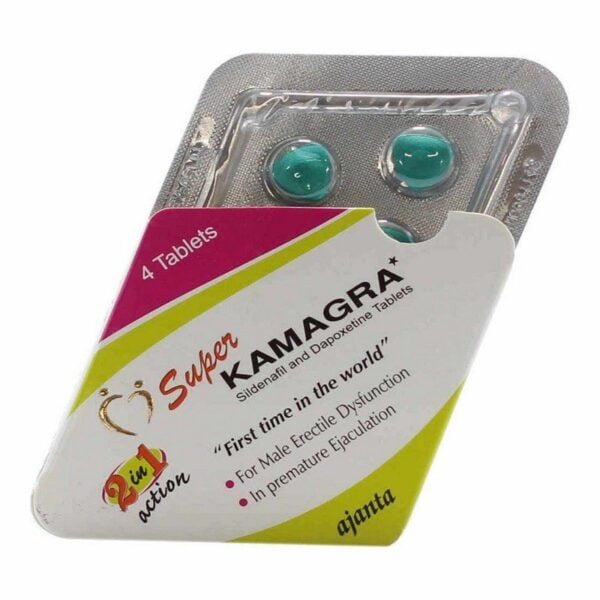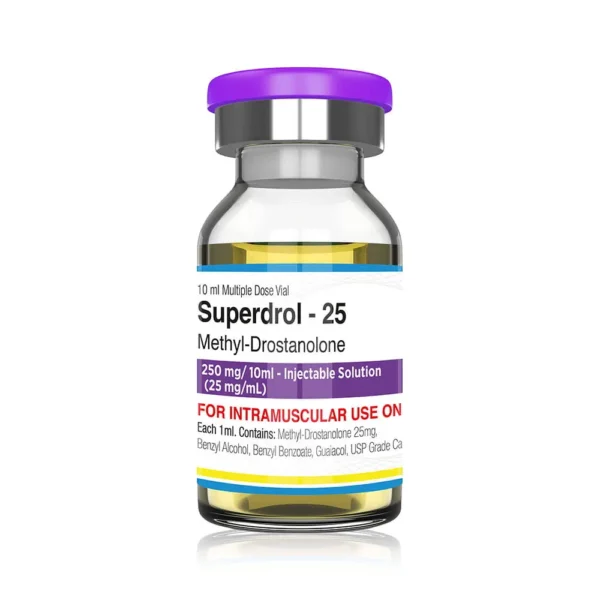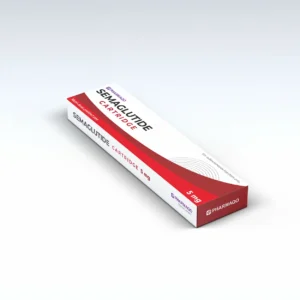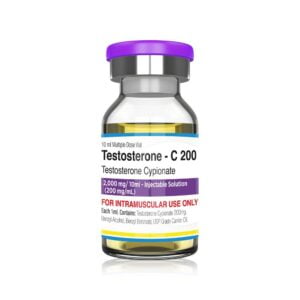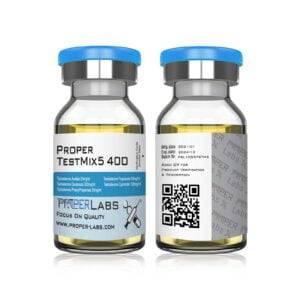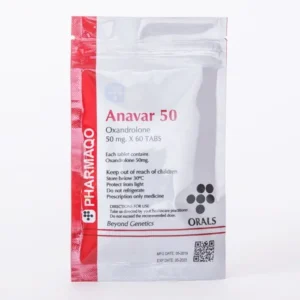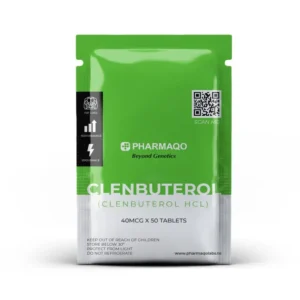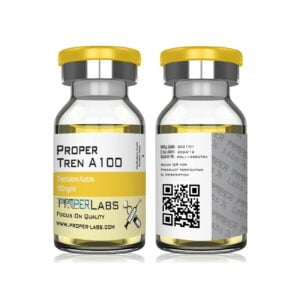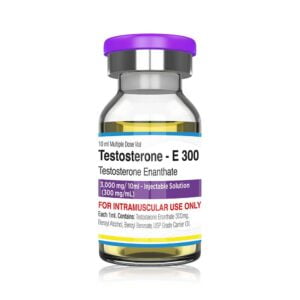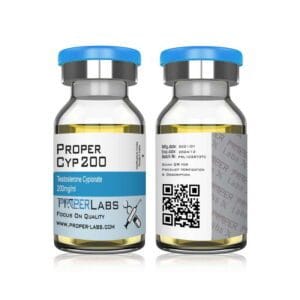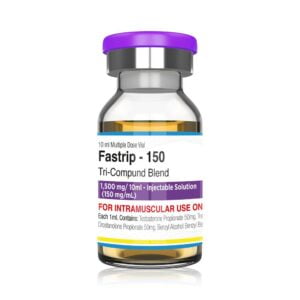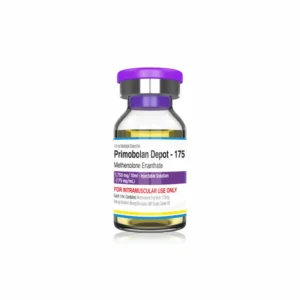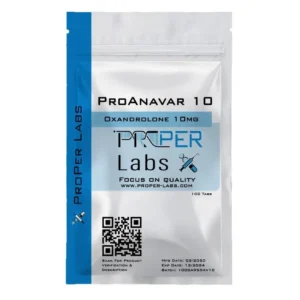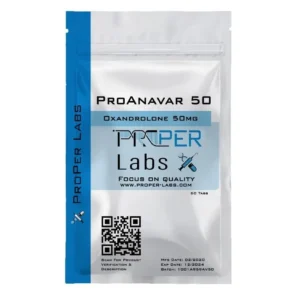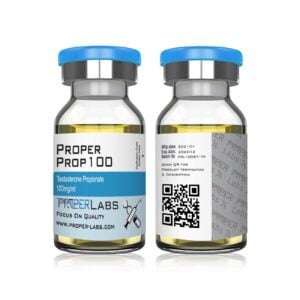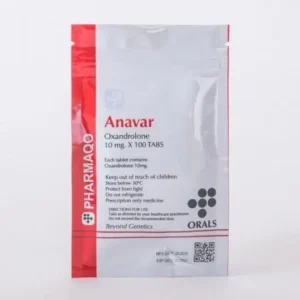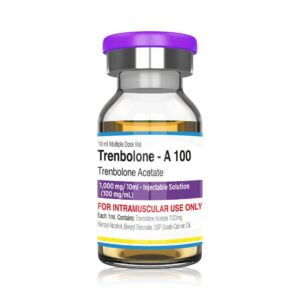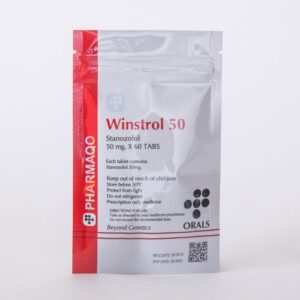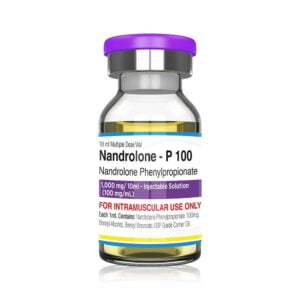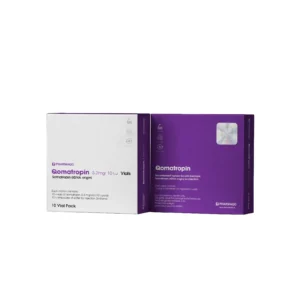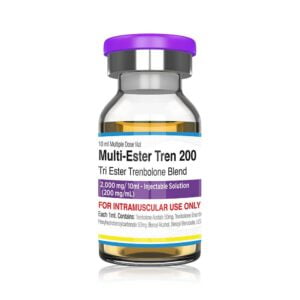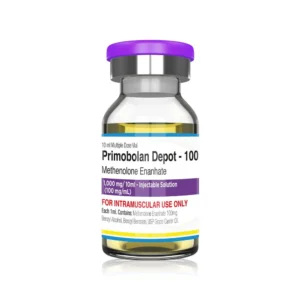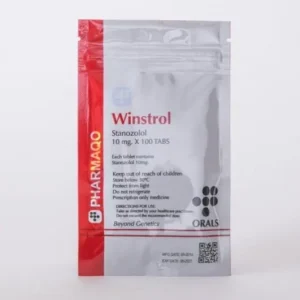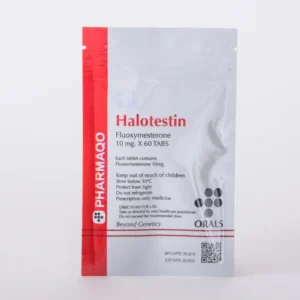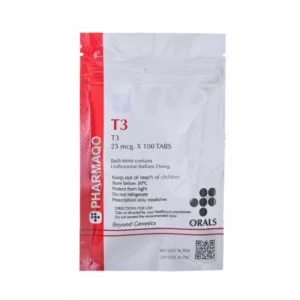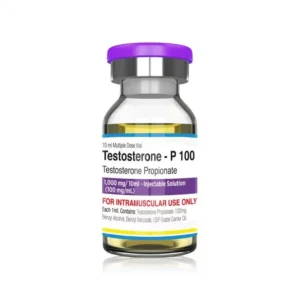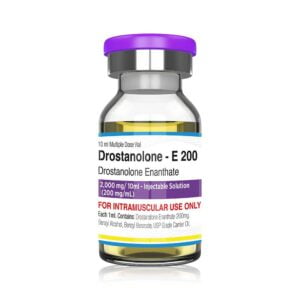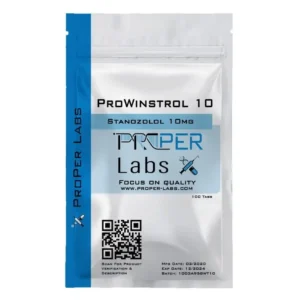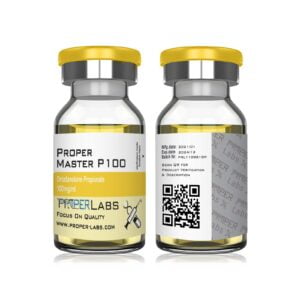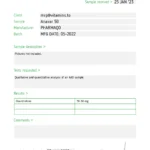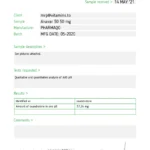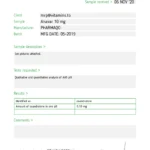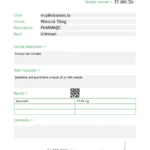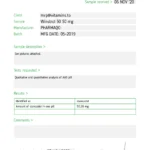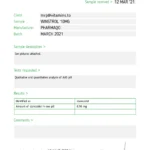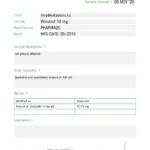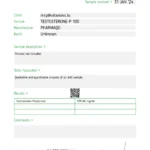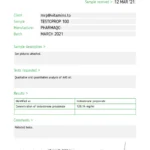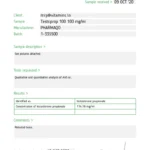Search
Filter by
- HT-Pharm 12
- Pharma Grade 1
- PharmaQo Labs 23
- Proper Labs 14
Filter by price
Filter by Brand
- HT-Pharm 12
- Pharma Grade 1
- PharmaQo Labs 23
- Proper Labs 14
Features
- HT-Pharm 12
- Pharma Grade 1
- PharmaQo Labs 23
- Proper Labs 14
Stock status
Top rated products
-
 Kamagra Super
$19.90
Kamagra Super
$19.90
-
 Superdrol 25 | Pharmaqo Labs
$40.00 – $70.00
Superdrol 25 | Pharmaqo Labs
$40.00 – $70.00
-
 Tamoxifen 20 (Nolvadex) | Proper Labs
$38.90
Tamoxifen 20 (Nolvadex) | Proper Labs
$38.90
-
 Test-Propionate 100 | HT-Pharm
$35.90
Test-Propionate 100 | HT-Pharm
$35.90
-
 Boldenone Undecylenate 300 | Pharmaqo Labs
$39.00 – $66.00
Boldenone Undecylenate 300 | Pharmaqo Labs
$39.00 – $66.00
-
 ProperProp 100 (Testosterone Propionate) | Proper Labs
$36.90
ProperProp 100 (Testosterone Propionate) | Proper Labs
$36.90
Showing 1–36 of 50 resultsSorted by popularity
This category features anabolic compounds frequently investigated for their potential roles in cutting cycles and lean muscle building research within the United States. Explore agents like Anavar (Oxandrolone) and Winstrol (Stanozolol), often studied for their association with promoting muscle hardness, definition, and preservation during phases of caloric restriction. We prioritize verifiable quality through accessible third-party lab testing for these compounds and provide fast, discreet USA domestic shipping alongside secure real card payment options to support your legitimate laboratory research requirements.
Semaglutide 5MG – PharmaQo – Prefilled Pen
$70.00 – $99.00Manufacturer: PharmaQo
Main substance: (Rybelsus, Ozempic, Wegovy)
Form: Injection
Unit: 5mg Pre-Filled Pen
Pack: Box
ProperEnan 300 (Testosterone Enanthate) | Proper Labs
$46.90Manufacturer: Proper Labs
Main substance: Testosterone Enanthate
Form: Injection
Unit: 10ml / 300mg/1ml
Pack: Vial
Anavar 10 | HT-Pharm
$45.90100 tablets of HT-PHARM Anavar (Oxandrolone), each containing 10mg. Provided strictly for laboratory research purposes only. Ships worldwide from our EU warehouse.
- ✓ Verified Quality: Lab-Tested Batch
- ✓ Worldwide Shipping: Tracked (5-14 working days typical) from EU Warehouse
- ✓ Secure Payments: Card, Crypto & Bank Transfer Accepted
- ✓ Discreet Packaging: Guaranteed Privacy
Testosterone-C (Testex) 200 | Pharmaqo Labs
$34.00 – $63.00Manufacturer: PharmaQo
Main substance: Testosterone Cypionate
Form: Injection
Unit: 10ml / 200mg/1ml
Pack: Vial
ProperTestMix5 (Testosterone Mix) 400 | Proper Labs
$50.90Manufacturer: Proper Labs
Main substance:
Testosterone Acetate 20mg/ml
Testosterone PhenylPropionate 30mg/ml
Testosterone Propionate 30mg/ml
Testosterone Cypionate 120mg/ml
Testosterone Decanoate 200mg/ml
Form: Injection
Unit: 10ml / 400mg/ml
Pack: Vial
Anavar 50 (Oxandrolone) | Pharmaqo Labs [50mg/60tabs]
$90.00 – $120.00Manufacturer: PharmaQo
Main substance: Oxandrolone
Form: Tablets / Pills
Unit: 60 Pills / 50mg each
Pack: Sachet
Oxandrolone Bodybuilding Guide – Everything to know
Clenbuterol | Pharmaqo Labs [100Tabs/40mcg]
$29.00 – $55.00Manufacturer: PharmaQo
Main substance: Clenbuterol
Form: Tablets / Pills
Unit: 100 Pills / 40mcg each
Pack: Sachet
ProperTren A 100 (Trenbolone Acetate) | Proper Labs
$46.90Manufacturer: Proper Labs
Active substance: Trenbolone Acetate
Form: Injection
Unit: 10ml / 100mg/ml – Vial
Testosterone Enanthate 300 | Pharmaqo Labs
$36.00 – $66.00Manufacturer: PharmaQo Labs
Active substance: Testosterone Enanthate
Form: Injection
Unit: 10ml / 300mg/1ml – Vial
ProperCyp 200 (Testosterone Cypionate) | Proper Labs
$41.90Manufacturer: Proper Labs
Main substance: Testosterone Cypionate
Form: Injection
Unit: 10ml / 200mg/1ml
Pack: Vial
Trenbolone Enanthate 200 | Pharmaqo Labs
$52.00 – $82.00Manufacturer: PharmaQo Labs
Active substance: Trenbolone Enanthate
Form: Injection
Unit: 10ml / 200mg/1ml – Vial
Fastrip150 | Pharmaqo labs
$40.00 – $69.00Manufacturer: PharmaQo
Main substance:
Trenbolone Acetate (50mg)
Testosterone Propionate (50mg)
Drostanolone Propionate (50mg)
Form: Injection
Unit: 10ml / 150mg/1ml
Pack: Vial
Deca Durabolin 300 | Pharmaqo Labs
$46.00 – $76.00Manufacturer: PharmaQo Labs
Active substance: Nandrolone Decanoate
Form: Injection
Unit: 10ml / 300mg/1ml – Vial
Test-Cypionate 250 | HT-Pharm
$44.9010 x 1ml ampules of HT-PHARM Testosterone Cypionate injectable solution, concentrated at 250mg/ml. Provided strictly for laboratory research purposes only. Ships worldwide from our EU warehouse.
- ✓ Verified Quality: Lab-Tested Batch
- ✓ Worldwide Shipping: Tracked (5-14 working days typical) from EU Warehouse
- ✓ Secure Payments: Card, Crypto & Bank Transfer Accepted
- ✓ Discreet Packaging: Guaranteed Privacy
Primobolan Depot 175 | Pharmaqo Labs
$90.00 – $120.00Manufacturer: PharmaQo
Main substance: Methenolone Enanthate
Form: Injection
Unit: 10ml – 175mg/ml
Pack: Vial
ProAnavar 10 (Oxandrolone) | Proper Labs
$49.90Manufacturer: Proper Labs
Active substance: Oxandrolone
Form: Tablets / Pills
Unit: 100 Tablets / 10mg each
ProAnavar 50 (Oxandrolone) | Proper Labs
$94.90Manufacturer: Proper Labs
Active substance: Oxandrolone
Form: Tablets / Pills
Unit: 60 Tablets / 50mg each
ProperProp 100 (Testosterone Propionate) | Proper Labs
$36.90Manufacturer: Proper Labs
Main substance: Testosterone Propionate
Form: Injection
Unit: 10ml / 100mg/1ml
Pack: Vial
Anavar 10 (Oxandrolone) | Pharmaqo Labs [10mg/100tabs]
$50.00 – $80.00Manufacturer: PharmaQo
Main substance: Oxandrolone
Form: Tablets / Pills
Unit: 100 Pills / 10mg each
Pack: Sachet
Oxandrolone Bodybuilding Guide – Everything to know
Trenbolone Acetate 100 | Pharmaqo Labs
$46.00 – $76.00Manufacturer: PharmaQo Labs
Active substance: Trenbolone Acetate
Form: Injection
Unit: 10ml / 100mg/1ml – Vial
Winstrol 50 | Pharmaqo Labs [60tabs/50mg]
$65.00 – $95.00Manufacturer: PharmaQo
Main substance: Stanozolol
Form: Tablets / Pills
Unit: 60 Pills / 50mg each
Pack: Sachet
NPP – Nandrolone-P 100 | PharmaQo Labs
$32.00 – $62.00Manufacturer: PharmaQo Labs
Active substance: Nandrolone PhenylPropionate
Form: Injection
Unit: 10ml / 100mg/1ml – Vial
Qomatropin (Growth Hormone) HGH 100iu | Pharmaqo Labs
$200.00 – $230.00Manufacturer: PharmaQo
Active substance: Human Growth Hormone
Form: Injection
Unit: 10 x 0.1Mg(10iu) Vial
Pack: Box
HGH in Bodybuilding
Tri-Tren 200 | Pharmaqo Labs
$59.00 – $79.00Tri-Tren also know as Multi-Ester Tren 200
Manufacturer: PharmaQo
Main substance:
Trenbolone Enanthate (100mg)
Trenbolone Acetate(50mg)
Trenbolone Hexahydrobenzylcarbonate (50mg)
Form: Injection
Unit: 10ml / 200mg/1ml – Vial
Primobolan Depot 100 | Pharmaqo Labs
$59.00 – $85.00Manufacturer: PharmaQo
Main substance: Methenolone Enanthate (100mg)
Form: Injection
Unit: 10ml / 100mg/1ml
Pack: Vial
Winstrol 10 (Stanozolol) | Pharmaqo Labs [100tabs/10mg]
$29.00 – $59.00Manufacturer: PharmaQo
Active substance: Stanozolol
Form: Tablets / Pills
Unit: 100 Pills / 10mg each
Halotestin | Pharmaqo Labs [10mg/60tabs]
$90.00 – $120.00Manufacturer: PharmaQo
Main substance: Fluoxymesterone
Form: Tablets / Pills
Unit: 60 Pills / 10mg each
Pack: Sachet
T3 (Cytomel) | PharmaQo [100tab/25mcg]
$30.00 – $60.00Manufacturer: PharmaQo
Main substance: Liothyronine
Form: Tablets / Pills
Unit: 100 Pills / 25mcg each
Pack: Sachet
Testosterone Propionate 100 | Pharmaqo Labs
$29.00 – $55.00Testosterone-P 100 also know as Testosterone Propionate 100mg
Manufacturer: PharmaQo Labs
Main substance: Testosterone Propionate (100mg)
Form: Injection
Unit: 10ml / 100mg/1ml – Vial
Masteron Enanthate 200 | Pharmaqo Labs
$56.00 – $86.00Manufacturer: PharmaQo Labs
Active substance: Drostanolone Enanthate
Form: Injection
Unit: 10ml / 200mg/1ml – Vial
ProWinstrol 10 (Stanozolol) | Proper Labs
$36.90Manufacturer: Proper Labs
Active substance: Stanazolol
Form: Tablets / Pills
Unit: 100 Tablets / 10mg each
ProperMaster P 100 (Drostanolone Propionate) | Proper Labs
$40.90Manufacturer: Proper Labs
Active substance: Drostanolone Propionate
Form: Injection
Unit: 10ml / 100mg/1ml – Vial
Trenbolone Hexy | Pharmaqo Labs
$60.00 – $90.00Main substance: Hexahydrobenzylcarbonate
Form: Injection
Unit: 10ml / 100mg/1ml
Pack: Vial
Masteron 100 | HT-Pharm
$59.9010 x 1ml ampules of HT-PHARM Masteron Propionate (Drostanolone Propionate) injectable solution, concentrated at 100mg/ml. Provided strictly for laboratory research purposes only. Ships worldwide from our EU warehouse.
- ✓ Verified Quality: Lab-Tested Batch
- ✓ Worldwide Shipping: Tracked (5-14 working days typical) from EU Warehouse
- ✓ Secure Payments: Card, Crypto & Bank Transfer Accepted
- ✓ Discreet Packaging: Guaranteed Privacy
ProperNPP 100 (Nandrolone Phenylpropionate) | Proper Labs
$38.90Manufacturer: Proper Labs
Main substance: Nandrolone PhenylPropionate
Form: Injection
Unit: 10ml / 100mg/ml
Pack: Vial
Test-Enanthate 250 | HT-Pharm
$40.90Test-Enanthate 250mg/ml – High Technological Pharmaceuticals
Manufacturer: HT-Pharm
Active substance: Testosterone Enanthate
Form: Injection – Intramuscular.
Unit: 10 x 1ml (Ampules) 250mg each.
Verify Purity & Potency: Lab-Tested Cutting Compounds
Ensure the integrity and accuracy of your research materials. We provide access to independent, third-party laboratory reports (typically HPLC) confirming the identity, concentration, and purity for the cutting steroids offered in this category. Review the analytical data before purchasing:
Feedback from Researchers
Read experiences regarding our service reliability and compound consistency for research supplies:
- Great Quality! I recently ordered and I’m impressed with the results. The formula works well—I’ve noticed more energy and faster recovery after workouts. Plus, the product arrived as described and was well-packaged. Highly recommend it for anyone looking for an effective and reliable supplement!– [Andie R], Verified Purchaser, USA
- I just found legit store with legit anavar and legit clen tabs. That’s all. The f***** clen is crazy trust me – [Steven P], Verified Purchaser, USA
- Everything about my order was delivered and authentic, other companies have scammed me before but I’ve had a great experience with this website. – Mark W, USA
[Read More Researcher Reviews]
Understanding Steroids Associated with Cutting Phases
Compounds often categorized as “cutting steroids,” such as Anavar (Oxandrolone) and Winstrol (Stanozolol), are typically DHT (dihydrotestosterone)-derived oral anabolic steroids. Their chemical structure means they generally do not convert to estrogen (aromatize), which is why they are associated with less water retention compared to “bulking” agents like Dianabol or some testosterones.
In research contexts and bodybuilding discussions, they are often investigated for:
- Lean Muscle Preservation: Potential to help retain muscle tissue during periods of caloric deficit.
- Muscle Hardness & Definition: Association with promoting a harder, more defined (“dry”) physique appearance.
- Strength Increases: Potential to increase strength, sometimes significantly even without large gains in body weight.
Their mechanisms involve interacting with androgen receptors and influencing nitrogen balance and protein synthesis, but their precise effects and potency can vary.
Critical Safety Information & Potential Risks
WARNING: Anabolic steroids like Anavar and Winstrol are potent compounds carrying significant health risks. They are Schedule III controlled substances in the USA and illegal to possess or use without a valid prescription. These products are intended strictly for legitimate laboratory research by qualified personnel. Do not handle or use without appropriate safety knowledge, qualifications, and precautions.
Key risks associated with these types of oral cutting steroids include:
- Liver Toxicity (Hepatotoxicity): Both Anavar and Winstrol are C17-alpha-alkylated, making them orally bioavailable but inherently stressful to the liver. Prolonged use or high doses can lead to elevated liver enzymes and potential liver damage. Regular liver function monitoring is a critical consideration in any research protocol.
- Cardiovascular Risks: These steroids can negatively impact cholesterol levels, typically suppressing HDL (“good”) cholesterol and potentially raising LDL (“bad”) cholesterol, increasing the long-term risk of cardiovascular disease.
- Hormonal Suppression: Use significantly suppresses the body’s natural testosterone production (HPTA shutdown). Research into post-cycle recovery strategies is complex and essential for users considering stopping administration.
- Androgenic Side Effects: Potential for acne, accelerated male pattern baldness (especially with DHT derivatives), and oily skin. Virilization (development of male characteristics like voice deepening, clitoral enlargement, body hair growth) is a serious risk for female subjects, even at doses sometimes considered “low.”
- Other Potential Risks: Winstrol is anecdotally linked to joint dryness or discomfort in some users. Both can potentially impact mood or sleep.
Reliable USA Shipping & Secure Payments for Research Supplies
Facilitating your research with professional service:
- Fast, Tracked USA Domestic Shipping: Ensuring prompt and traceable delivery within the United States.
- Guaranteed Discreet Packaging: All orders are shipped in plain, unmarked packaging for complete privacy.
- Secure Real Card Payment Processing: Utilize our encrypted system for safe transactions using major credit/debit cards.
- Responsive Support: Available for inquiries regarding orders, shipping, or payments for research supplies.
Frequently Asked Questions
- What does “cutting steroid” typically mean in a research context? It refers to compounds studied for their potential to aid in preserving lean muscle mass and promoting hardness/definition during simulated fat loss phases (caloric restriction).
- Are oral cutting steroids like Anavar and Winstrol liver toxic? Yes, as C17-alpha-alkylated compounds, both carry a risk of hepatotoxicity and require caution regarding liver health.
- How is the quality of these research compounds verified? We provide access to third-party lab reports (HPLC) verifying identity, purity, and concentration. Please see the “Verify Purity & Potency” section.
- Is it legal to buy Winstrol or Anavar online in the USA for personal use? No. They are Schedule III controlled substances and require a valid prescription for legal human use. Our products are intended for legitimate research only where laws permit.
- How fast is shipping for orders within the USA? Domestic orders usually ship within 24-48 hours and typically arrive in 5-10 business days, with tracking provided.
- Is the shipping packaging discreet? Yes, absolutely. We use plain, standard packaging with no external indicators of the contents.
Related Research Categories
Explore lab-tested cutting compounds like Anavar & Winstrol for USA-based laboratory research. Shipped fast and discreetly.
Disclaimer: Schedule III Controlled Substances. Prescription Required for Legal Human Use in USA. Products intended strictly for laboratory research purposes only by qualified personnel where legally permissible. Not for human or veterinary use. Misuse involves significant health and legal risks. Review all Terms & Conditions before purchase. Consult qualified professionals.
